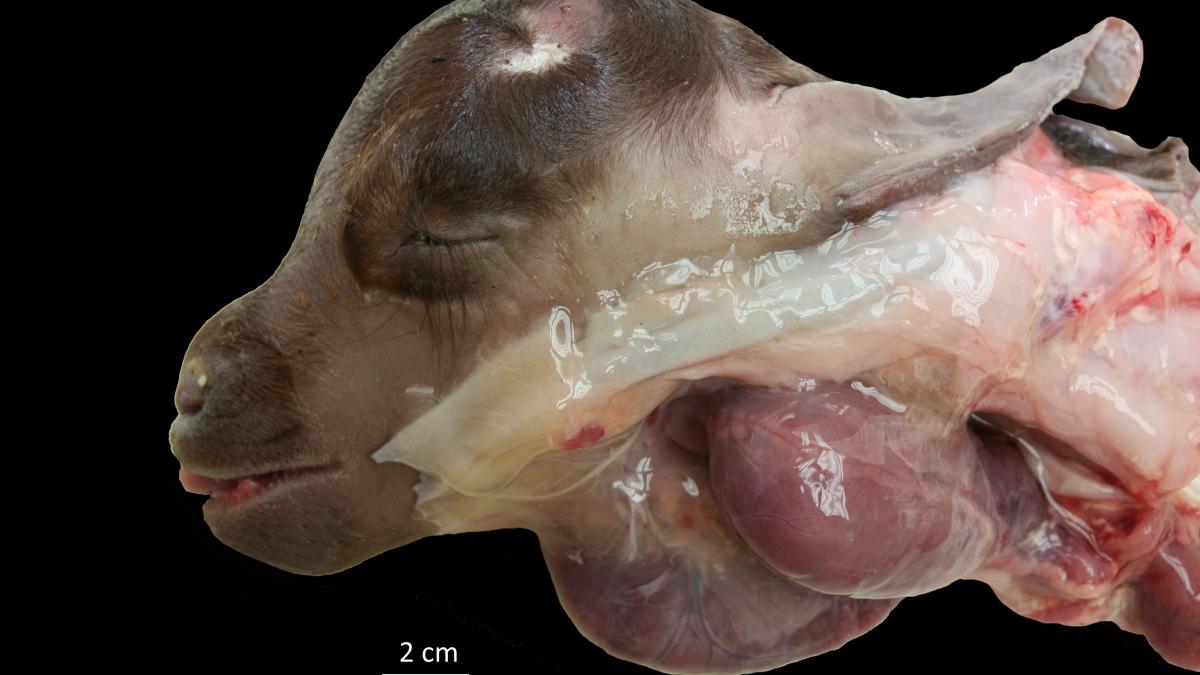
Animal: Boer goat kid, stillbirth in term
Gross finding: diffusely enlarged thyroid glands, alopecia and myxedema
Morphologic diagnosis: Thyroid glands: bilateral hyperplasia, severe, diffuse
Skin : alopecia, multifocal to coalescing, severe
Subcutaneous tissue: myxedema, diffuse, severe
Condition: Congenital goiter
Comment: Goiter is a term for non-neoplastic and non-inflammatory hyperplasia of thyroid glands. The most common cause of congenital goiter is an iodine deficiency in the dam due to a lack of iodine supplements in feed or ingestion of goitrogenic plants ( Brassica sp.) like kale, rape, cabbage, and turnips. These plants contain goitrin which inhibits the incorporation of iodine into precursors of thyroxin and interferes with the secretion of iodine. Just as a lack of iodine can cause goiter so can its excess in the diet. The most obvious gross findings in fetuses or newborns are enlarged thyroid glands with alopecia, myxedema, or swollen tongue.
Contributor: Šimun Naletilić (post-mortem, photo and text)- Croatian Veterinary Institute;
resident of the ECVP Training Centre Zagreb at Veterinary Faculty, University of Zagreb
References:
- Rosol TJ, Grone A. Endocrine glands. In: Maxie MG, ed. Jubb, Kennedy, and Palmer’s Pathology of Domestic Animals. 3. 6th ed. St. Louis, MO: Elsevier; 2016:310-326.
- Moeller RB Jr. Disorders of Sheep and Goats. In: Njaa BL, ed. Kirkbride’s Diagnosis of Abortion and Neonatal Loss in Animals 4th ed. Oxford, MO: Wiley-Blackwell; 2012:80
